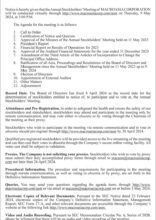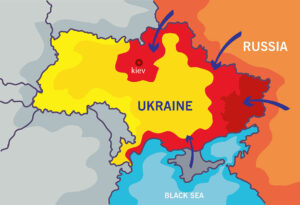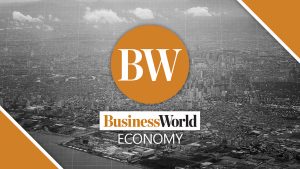Moving on

About two months ago, the World Health Organization (WHO) canceled its declaration of a global health emergency in relation to the spread of the COVID-19 virus since December 2019. After about three years, it no longer considered COVID-19 as a health emergency of international concern. In short, the pandemic is over. And now, the Philippines is also considering withdrawing its own declaration of a state of public health emergency in the country.
It is about time, really. And the sooner the President lifts the state of public health emergency, the better for all concerned. By doing so, we can all move on from the disastrous three years that we have been in various states of quarantine and the implementation of public health protocols. This is not to say that we should give up all the protocols. These, in my opinion, should still be observed but at a personal or individual level and in a number of specific settings.
Health Secretary Teodoro Herbosa told a press briefing on Tuesday that President Ferdinand Marcos, Jr. would “soon” order the end of the state of public health emergency in the country, which started in March 2020. Herbosa added that the President considered the emergency state as “de facto” lifted, with masking already optional rather than compulsory.
But there are a number of consequences to consider. First, emergency use authorizations will be withdrawn, and thus vaccine makers must now secure certificates of product registration with the Food and Drug Administration (FDA) before they can distribute vaccines. Second, vaccines will no longer be administered for free as they will already be sold in the market like other vaccines.
Moreover, the special allowance of healthcare workers caring for COVID-19 patients and perks for those who get sick because of COVID will also end. The Private Hospitals Association of the Philippines, Inc. (PHAPi) wants these benefits to continue, while the Alliance of Health Workers (AHW) claims the state of emergency should remain as a lot of people are still getting sick from the virus.
These concerns are valid, especially since not all hospitals are profit centers. But while I support the call for more benefits for healthcare workers, special allowances in relation to COVID will have to end, eventually. And, I imagine there is a threshold to consider by way of number of cases to determine whether a state of public health emergency should be retained.
As early as May, the US government was also set to end all COVID-related emergency measures, to restore pre-pandemic “normal.” It allowed for a four-month transition period from February only to ensure that poor Americans on Medicaid would continue to receive coverage. The end of US emergency measures coincided with the WHO lifting of the global public health emergency.
But an AFP news report added that “the end of the national and public health emergencies [in the US] will not have an impact on mask or vaccination mandates which have been regulated at the state or local level,” and neither will it “affect school or business operations.” However, there would be changes to policies on the flow of would-be immigrants.
I believe we should deal with the local public health emergency declaration in a similar fashion. While the national emergency ends, local authorities should be allowed some leeway with respect to local rules on masking and vaccination, provided that any of their initiatives in this regard will have a basis in law and in science.
As for vaccine availability, Secretary Herbosa noted that Pfizer already received a product registration certificate to start selling its bivalent COVID-19 vaccine. At the same time, the government is negotiating with donors and suppliers for vaccines for the poor, or those who cannot afford them. As things are, Pfizer corners the local market for COVID-19 vaccine for sale.
I believe the Philippine government should already state a specific date as to when the national public health emergency will end locally. Perhaps by end-July or early August? This will give businesses and schools, among others, as well as the general public some idea when they can expect the full resumption of pre-pandemic “business as usual.” Note that many schools resume in August.
Admittedly, COVID-19 still exists, and people are still getting sick because of the infectious virus. Obviously, there are no assurances that COVID-19 would not surge again, despite vaccination efforts. After all, vaccines wane over time, and when the public health emergency is lifted, foreign travel will resume in full force. The challenge will then shift to effective surveillance. Moreover, variants continue to mutate.
And, if I am not mistaken, the Philippines no longer maintains an “official monitoring system” for COVID spread and the Department of Health (DoH) is now relying on hospital data — testing and admission — in determining the number of COVID-19 cases at any given time. So far, the number of cases seems manageable. As long as surveillance efforts are enhanced, I think we should be okay.
At this point, I believe that declaring an end to the public health emergency is just a matter of course. So, why further delay it? It may no longer matter much to business and industries as it will result in significant changes in working conditions. Most restrictions have been lifted, anyway. And in many instances, protocols are observed more in breach.
As I had written in February, given the downtrend in the number of severe cases and deaths from COVID, I believe it is really time for us to move on. And to further boost business and consumer confidence, and signal the return the normal, the government needs to decide and communicate soon how it intends to move forward and when.
Marvin Tort is a former managing editor of BusinessWorld, and a former chairman of the Philippine Press Council




